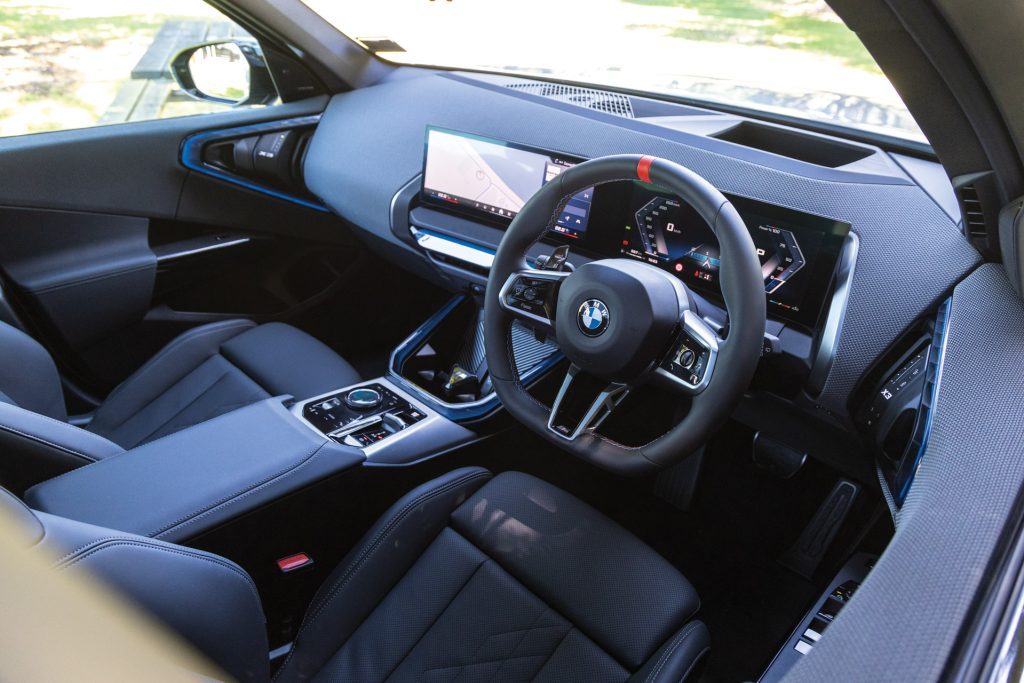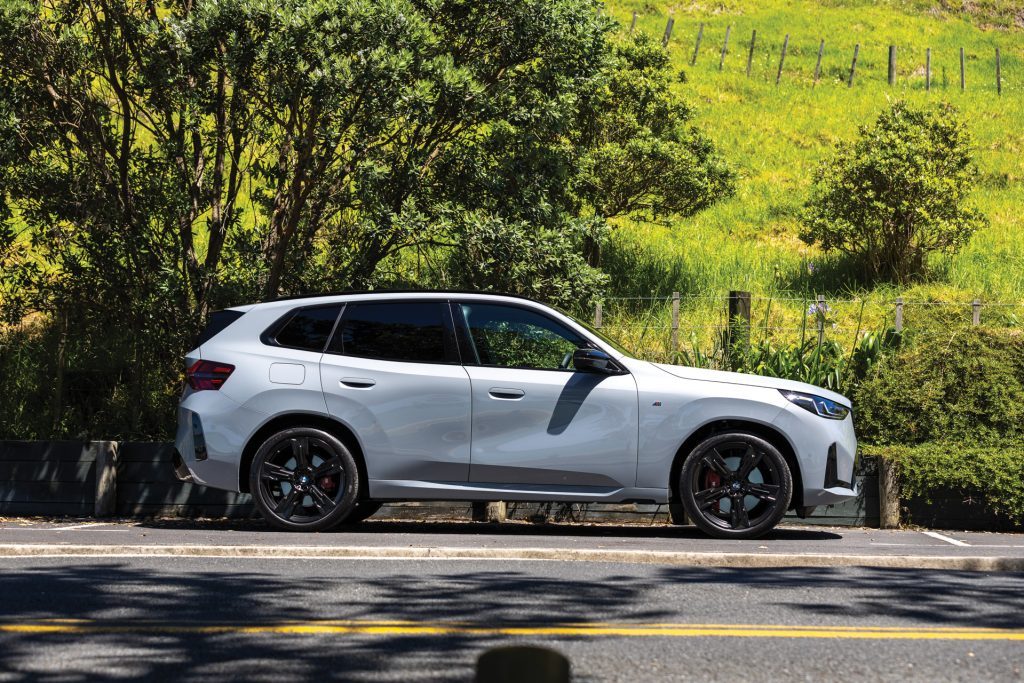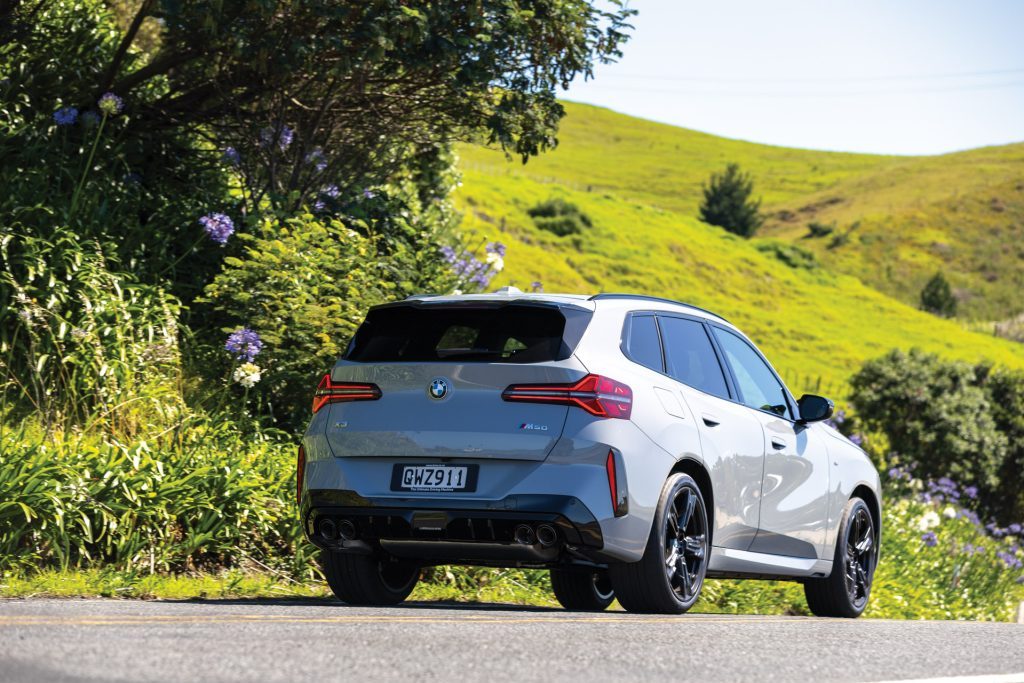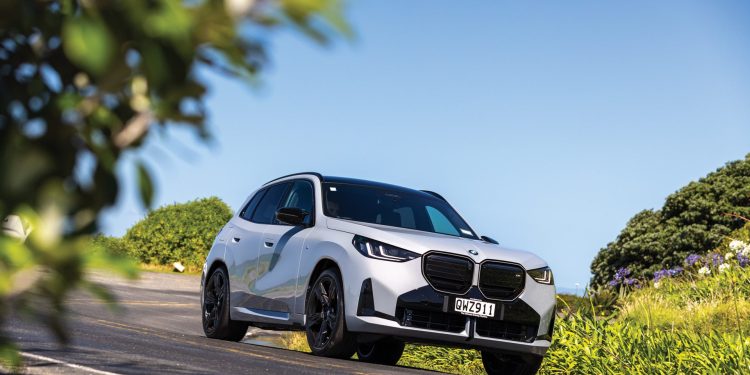2025 BMW X3 M50 xDrive Review
Words: Peter Louisson | Photos: Isaac Western
The M50 xDrive sits at the top of the X3 line-up, a performance-oriented SUV with a compelling blend of power, agility and everyday usability. Don’t wait for the new X3 M as rumours suggest this M50 will be the hottest gas-burning X3. BMW will apply the full M treatment to the forthcoming iX3, due next year.
But don’t feel hard done by, for this is worthy of its M badge, even if it’s not the full-fat version. It still has a heap of power, goes like hell and yet is civilised enough to play the part of a luxury SUV.
That starts with the styling, not overly pumped as M cars tend to be. The M aerodynamics package gives it enough sporting flashes to signal the intent. We like its restraint in that regard, although that massive grille up front is hardly subtle, especially at night when the whole front end lights up.
Inside, it’s all action too, sporting a fat wheel with a flat bottom rim and big gearshift flappers in behind. There are leather treatments and also an interesting knitted textile finishing which is an optional $1200 extra. It’s a tad different, though does remind of the Holden Cruze which rocked a similar finish on its dashboard. It also features on the door tops, though doesn’t feel very welcoming when your forearm comes into contact with it.

BMW’s ongoing digitalisation quest sees a big screen for the iDrive which features QuickSelect (getting things done with a minimum of tapping and swiping) and a reduction in physical buttons. They still persist with the iDrive controller however, taking up valuable space on the console. It’s best to learn how to harness the voice controller, making it all less distracting. But enough about all that, what about the power unit?
That’s a silky smooth 3.0-litre inline six, making 280kW and 540Nm of torque. Being as it’s 2025, BMW has added a motor in the mix too. This 48v device is a crankshaft-mounted starter generator and is integrated into the eight-speed auto’s housing. It generates 200Nm and 13kW, helping the six to get things pumping more quickly from stopped. It can also enable electric driving when parking and manoeuvring, though not very often. This mild hybrid device allows BMW to quote max power at 293kW and torque of 580Nm.
It helps smooth out the torque delivery too, the six feels strong right down low, turbo lag not an issue. Does it help consumption? The official figure is 8.3L/100km, whereas this vehicle’s long term average was tracking in the mid-10s. That’s acceptable for a decent sized SUV, especially one that can hit the limit in 4.6sec. Yes this is quick but it’s more than just a straight-line fiend. While it’s not quite the quasi-911 as the number plate might suggest, it’s proficient at covering ground.

The six’s healthy torque reserve fills the 2000-4000rpm range before the power properly chimes in as it revs sonorously towards 6000. Click the trans into its Sport setting, and then you need not worry about the paddles. It’s quick with the changes, holding in gear perfectly on a winding road, and it’s smart with an accompanying downshift when you’re on the brakes. These are darn good too, with a just-right action and plenty of stopping power. Of course it steers well, with a feelsome character, the assistance being not too heavy. It’s quick enough on the turn as well, without being darty.
While it’s close to two tonnes on the road, it manages itself well. It’s fairly neutral through the corners, balanced and grippy. There’s stuff-all protest from the front end as the hardware and electronics combine to round up bends in convincing fashion. BMW’s AWD system has an electronically-controlled multiplate clutch in the transfer case that gets signals from the DSC system to send the torque where it’s needed most. It runs a rear-drive bias to neutralise the power-on understeer, while it’s helped by the electro-mechanical M Sport rear LSD, further dividing the drive between the rear wheels. And so with all that, it’s hard to unstick.
While the suspenders have been mildly M’d (firmer damper settings, ‘moderately’ increased spring rates and stauncher anti-roll bars), the adaptive nature of the shocks sees it doing a good double act. It’s fairly compliant in its Normal mode, and pretty hushed on the highway considering its sizeable tyres (285/35s on the rear).
On the daily, the M50 is just as easy going as the 20d, with breezy steering and a good turnaround. There are BMW’s well drilled helpers on board; the reverse assistant helping you out of tricky spots, and the cracking surround view camera. There’s also the assisted driving function that helps deal with both rush hour traffic (great in the stop and go grind) and motorway cruising. However, it leaves quite a distance to the car in front.
Practically speaking, it has room for four comfortably, a middle passenger in the back at a squeeze. The X3 offers 570 litres of boot space and its 40:20:40 split back seat allows more load versatility. Fold them all down and space increases to 1700L. And it can tow up to 2.5 tonnes. Quite a versatile performance machine then, if on the expensive side at $150,900.
The competitive set includes the similarly-priced Audi SQ5, which is a bit old now, the diesel-powered SUV not quite as quick or dynamic. From Mercedes-Benz, the AMG GLC 43
uses a highly-strung four pot that can’t match the low-end grunt or smoothness of BMW’s six.

BMW X3 M50 xDrive
$150,900 / 8.3L/100km / 189g/km
0-100 km/h 4.6s
Engine 2990cc / IL6 / DI/T
Max power 293kW@5200-6200rpm
Max torque 580Nm@1900-4800rpm
Drivetrain 8-speed auto / AWD
Weight (claimed) 1980kg





